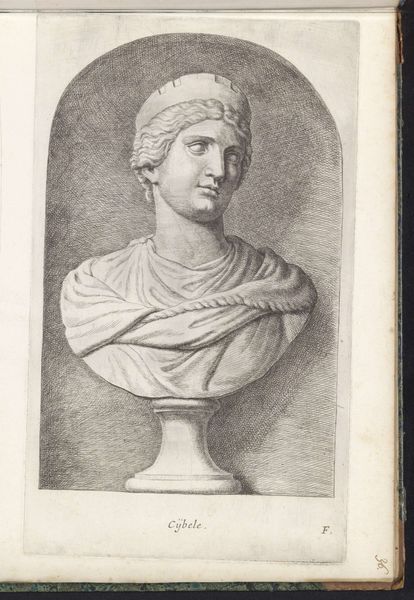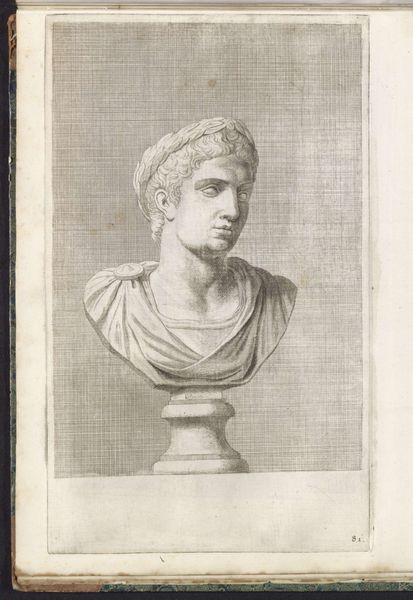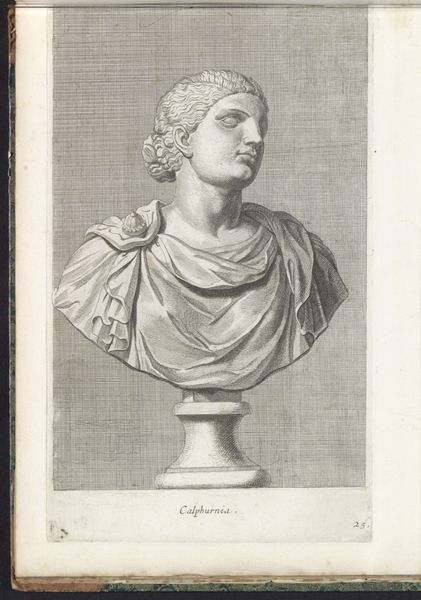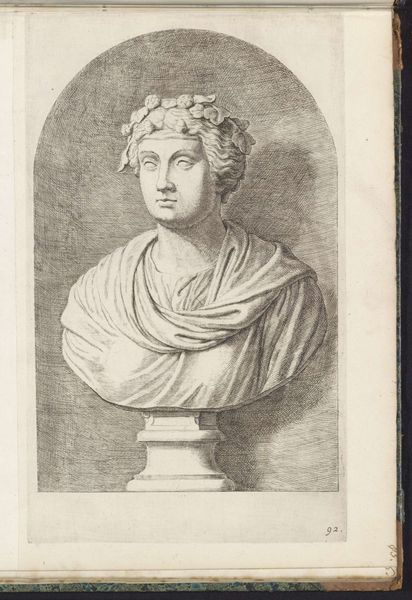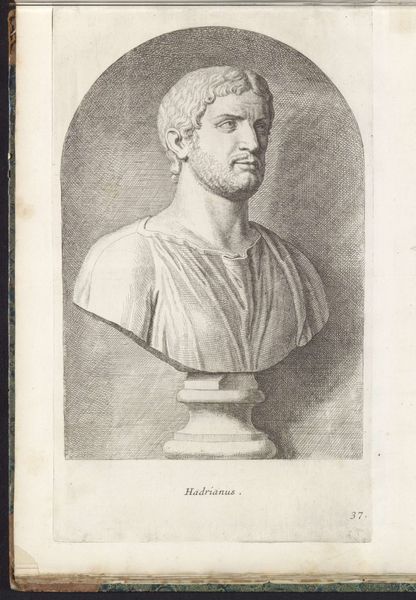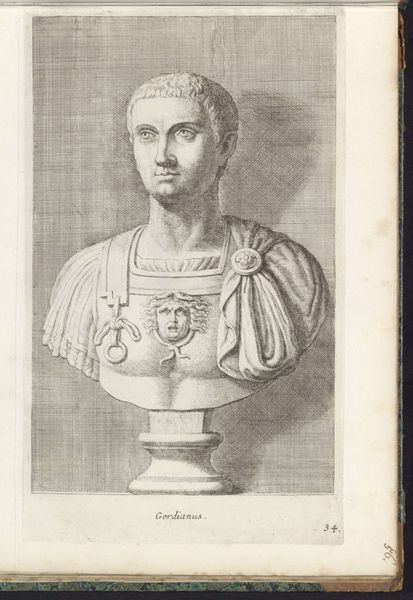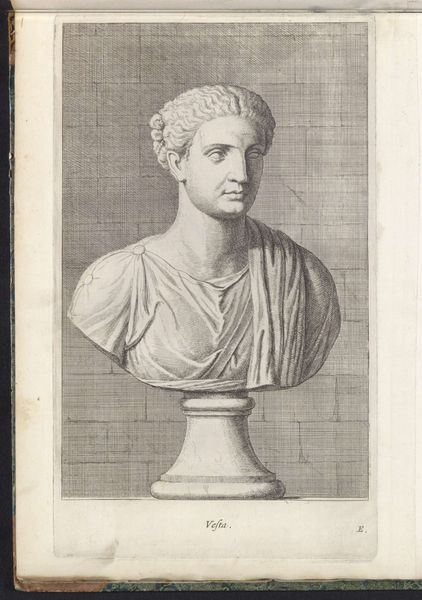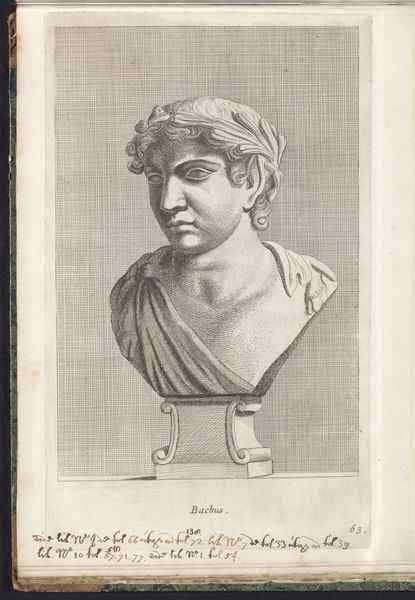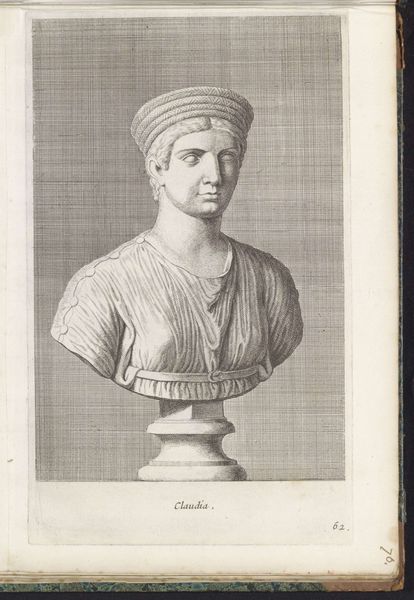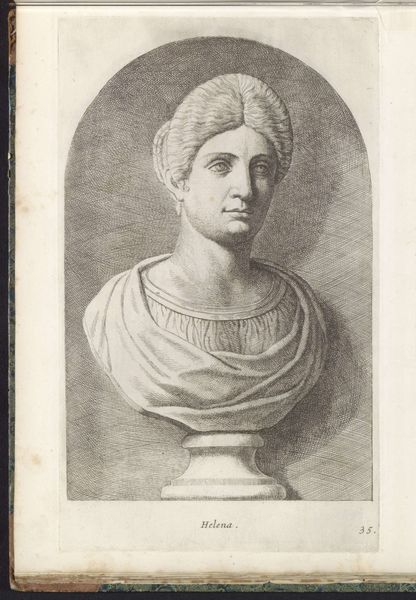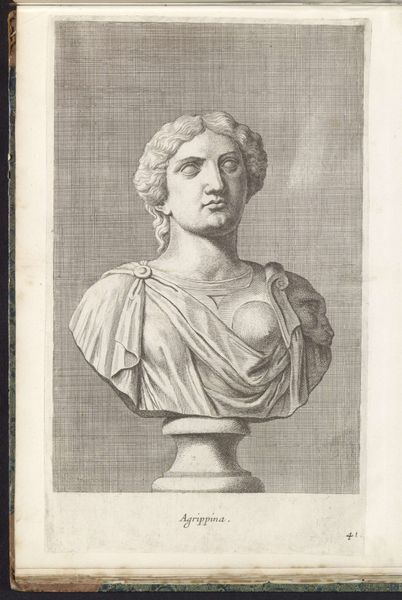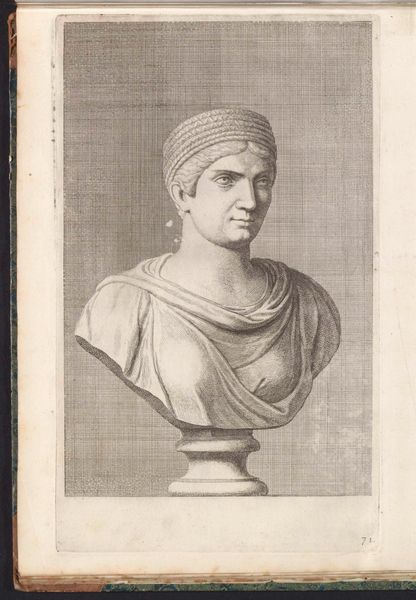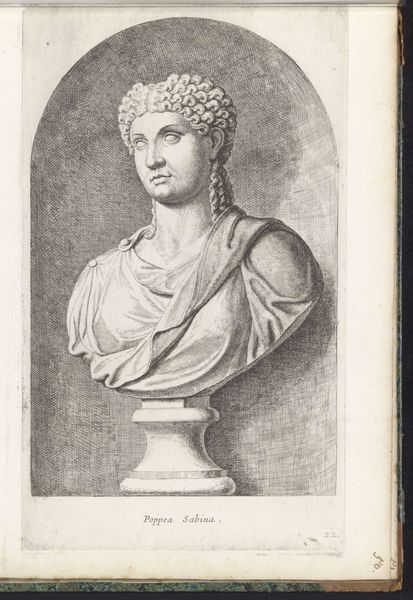
engraving
#
portrait
#
baroque
#
greek-and-roman-art
#
old engraving style
#
history-painting
#
engraving
Dimensions: height 325 mm, width 195 mm
Copyright: Rijks Museum: Open Domain
Editor: This is the "Buste van Aristea," an engraving by Hubert Quellinus, made sometime between 1646 and 1670. The subject is very serene, classical. What's striking to me is the artist's control of line to create a sculpture-like effect on paper. What are your initial thoughts when you see this work? Curator: You know, it whispers to me of theatrical grandeur, the kind found in Baroque opera houses, don't you think? Look at the confident lines! It feels as though Quellinus is less concerned with simple replication and more interested in translating a sense of imposing dignity onto paper. The subject, this Aristea, is elevated—literally and figuratively—on her pedestal. Editor: Right, the pedestal! I was so focused on the bust itself. But it's strange, isn't it, how much weight that architectural element adds? What was Quellinus trying to achieve by presenting her this way? Curator: Well, consider the time. Seventeenth-century viewers would have instantly recognised and understood the reference to classical antiquity. It’s history being performed; this is not just a likeness, but an idea, an almost godly eminence brought to life with incredible detail. This particular representation suggests someone powerful and possibly wise. Almost like the art is suggesting who they might be beyond the looks that appear on the surface. It would be fascinating to imagine what that may mean. What do you think? Editor: It is amazing how much story he manages to tell through just line and form. I see what you mean; now the face feels even more imposing! It feels good to have taken some time with the engraving. Curator: Indeed! Every time I come back to it, I see a little bit more. That’s the beauty of really studying art like this.
Comments
No comments
Be the first to comment and join the conversation on the ultimate creative platform.
